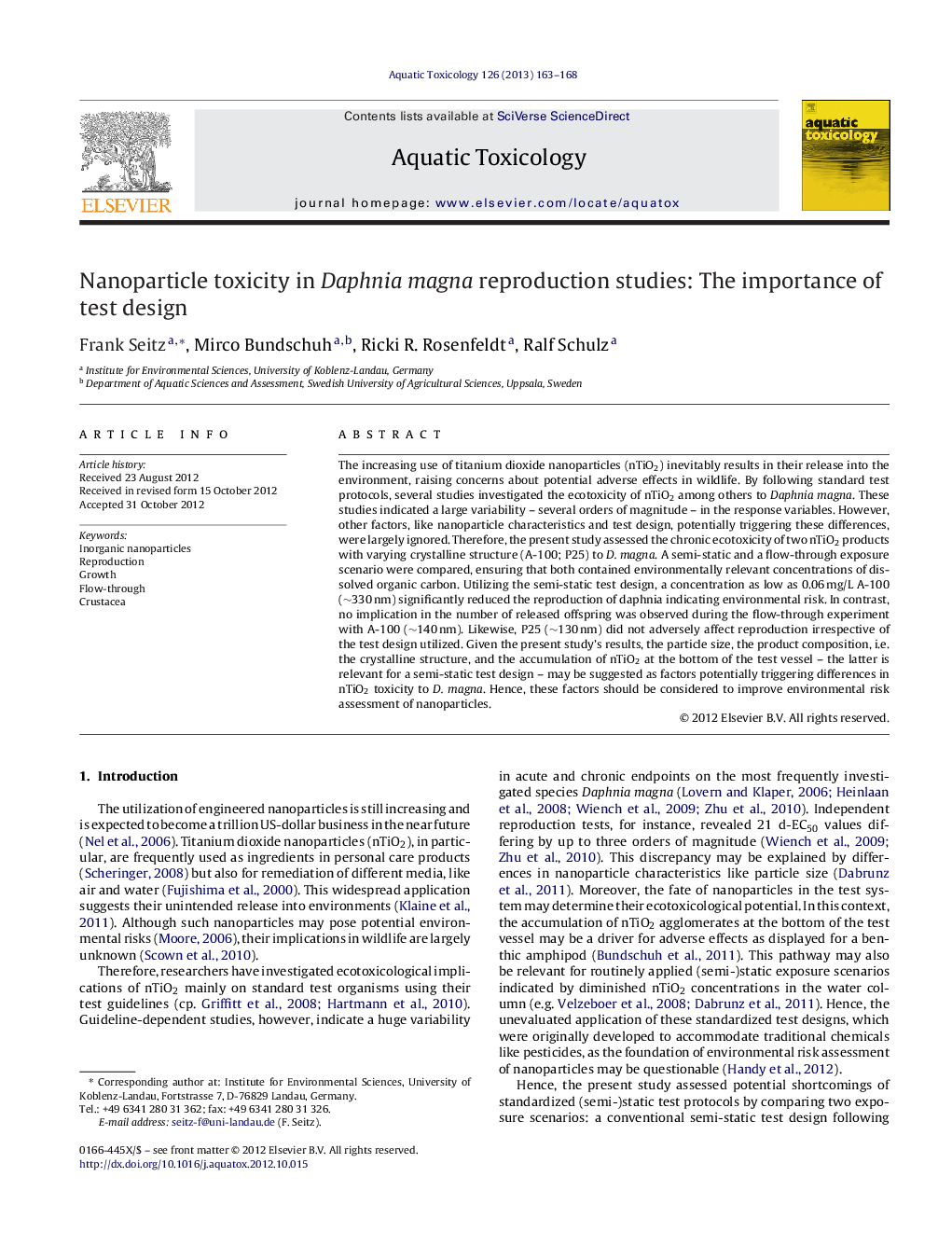| کد مقاله | کد نشریه | سال انتشار | مقاله انگلیسی | نسخه تمام متن |
|---|---|---|---|---|
| 4529598 | 1625970 | 2013 | 6 صفحه PDF | دانلود رایگان |

The increasing use of titanium dioxide nanoparticles (nTiO2) inevitably results in their release into the environment, raising concerns about potential adverse effects in wildlife. By following standard test protocols, several studies investigated the ecotoxicity of nTiO2 among others to Daphnia magna. These studies indicated a large variability – several orders of magnitude – in the response variables. However, other factors, like nanoparticle characteristics and test design, potentially triggering these differences, were largely ignored. Therefore, the present study assessed the chronic ecotoxicity of two nTiO2 products with varying crystalline structure (A-100; P25) to D. magna. A semi-static and a flow-through exposure scenario were compared, ensuring that both contained environmentally relevant concentrations of dissolved organic carbon. Utilizing the semi-static test design, a concentration as low as 0.06 mg/L A-100 (∼330 nm) significantly reduced the reproduction of daphnia indicating environmental risk. In contrast, no implication in the number of released offspring was observed during the flow-through experiment with A-100 (∼140 nm). Likewise, P25 (∼130 nm) did not adversely affect reproduction irrespective of the test design utilized. Given the present study's results, the particle size, the product composition, i.e. the crystalline structure, and the accumulation of nTiO2 at the bottom of the test vessel – the latter is relevant for a semi-static test design – may be suggested as factors potentially triggering differences in nTiO2 toxicity to D. magna. Hence, these factors should be considered to improve environmental risk assessment of nanoparticles.
► nTiO2 concentrations one order of magnitude above the PEC caused adverse chronic effects.
► Particle size and product composition, i.e. crystalline structure, trigger differences in nTiO2 toxicity.
► nTiO2 accumulation at the bottom of the test vessel is an important effect pathway.
► Dissolved organic carbon influences fate and finally nTiO2 toxicity.
Journal: Aquatic Toxicology - Volume 126, 15 January 2013, Pages 163–168